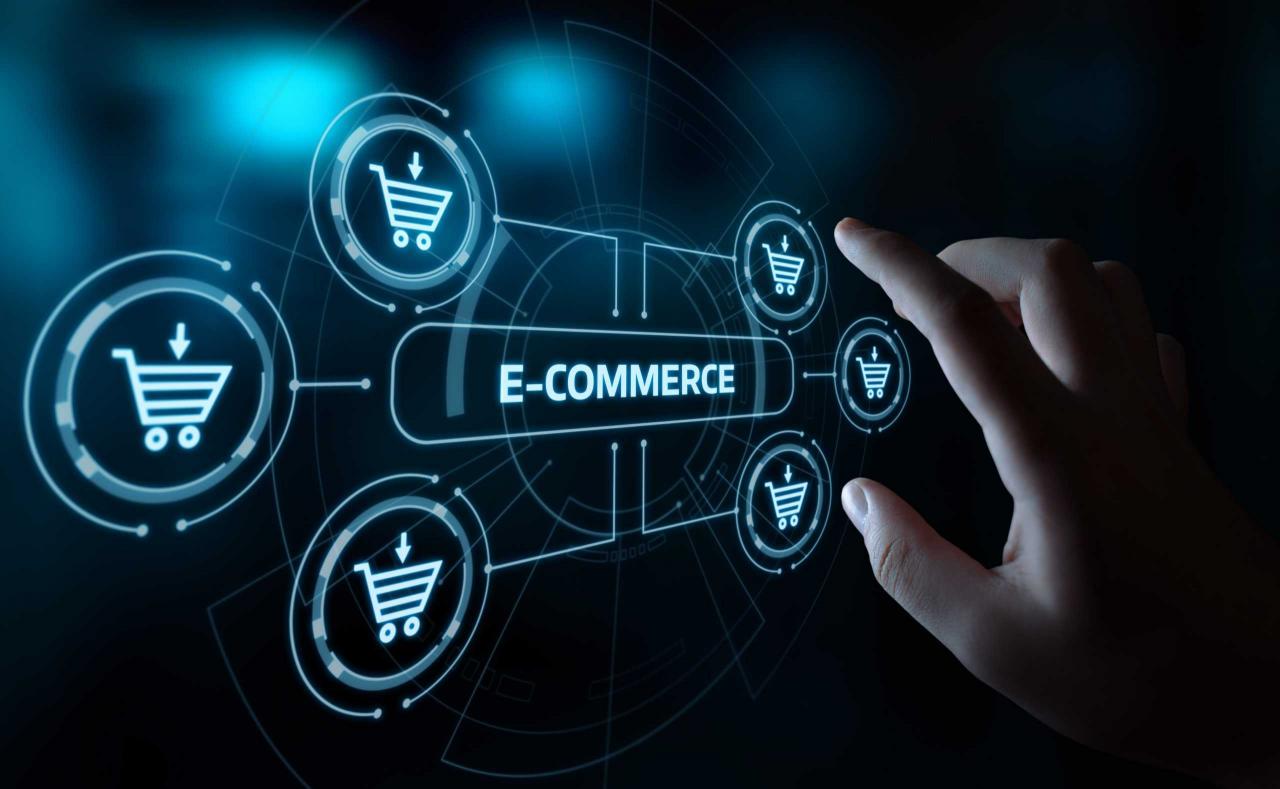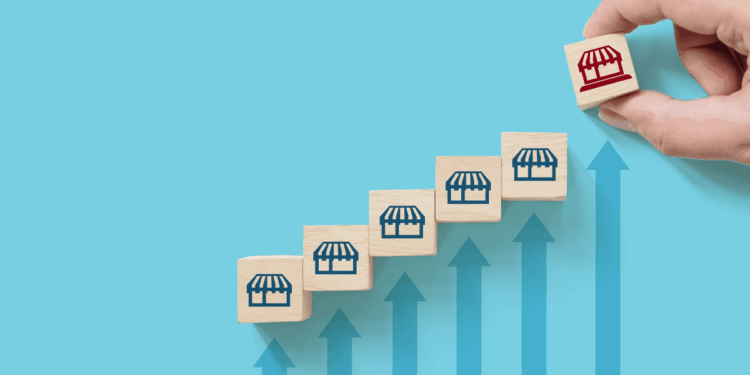The landscape of e-commerce is undergoing a fundamental and irreversible change. For years, the industry was dominated by the transactional model: a customer searches, clicks, pays, and the interaction ends—until the next impulse purchase.
This is rapidly being supplanted by the Subscription Economy, a model that prioritizes a continuous, value-driven relationship over a one-time sale.
This monumental shift, often referred to as e-commerce’s next big wave, is reshaping business valuations, revenue predictability, and the very nature of customer loyalty.
The Subscription Economy, propelled by advancements in digital infrastructure and a profound shift in consumer preference from ownership to access, is no longer limited to media streaming or Software-as-a-Service (SaaS).
It has aggressively moved into the realm of physical goods and personalized services, fundamentally altering the unit economics of online retail. Companies that master this shift—focusing on minimizing churn and maximizing Customer Lifetime Value (CLV)—will not just survive but thrive in the hyper-competitive digital marketplace.
This extensive analysis will dissect the mechanics of this revolution, exploring the different subscription archetypes, the core metrics for success, and the strategic imperatives for e-commerce businesses aiming to secure a dominant, recurring revenue stream.

The Paradigm Shift: From Transactions to Relationships
The transactional model of e-commerce is inherently volatile. Revenue is a constant battle, relying on continuous, costly customer acquisition and the unpredictable nature of repeat purchases.
High customer acquisition costs (CAC) often erode profit margins, and a business’s valuation rests on its ability to sustain a high-volume, low-margin treadmill.
The subscription model in e-commerce, however, flips this dynamic on its head. By securing a recurring revenue stream, the business moves from the anxiety of “will they buy again?” to the assurance of Monthly Recurring Revenue (MRR).
This predictable cash flow is the engine of high valuations, fueling aggressive investment in product development, superior customer experience, and better supply chain optimization.
The focus shifts from the initial sale to retention, creating a symbiotic relationship where both the business and the customer benefit from long-term engagement.
The Driving Forces Behind the Subscription Surge
The widespread adoption of the recurring revenue model in e-commerce is not accidental; it’s the result of several converging market forces:
A. Consumer Desire for Convenience and Automation
Modern life is characterized by a premium on time. Consumers are fatigued by the constant need for restocking and reordering. Subscriptions automate the purchase of commodity and essential items, eliminating friction and cognitive load. This convenience—the product simply arrives when needed—is a powerful value proposition.
B. The Search for Curation and Discovery:
In an era of overwhelming product choice, consumers appreciate expert guidance. Curation subscriptions offer a personalized, “surprise and delight” experience, introducing customers to new products they might not have found otherwise. This adds an emotional, experiential layer to the transaction.
C. Technological Infrastructure Maturity:
Sophisticated and user-friendly subscription management platforms (billing systems, CRM integration, and payment gateways) have democratized the model. E-commerce businesses of any size can now implement complex tiered and usage-based billing with relative ease, a capability once reserved for enterprise SaaS companies.
D. The “Access Over Ownership” Mindset:
Driven primarily by younger demographics, there is a cultural shift away from the burden and inflexibility of ownership. This is why services for clothing rental, equipment leasing, and access to premium product libraries thrive. The customer gains the utility of the product without the commitment or depreciation.
The Three Core E-commerce Subscription Archetypes
The subscription economy is not a monolith. Within e-commerce, three primary models have emerged, each with distinct operational challenges and value propositions. Understanding these archetypes is crucial for any business planning its recurring revenue strategy.
1. Replenishment Subscriptions (The Convenience Model)
This is the simplest and often the most successful model for everyday items. It focuses entirely on automating the purchase of consumable products.
- Value Proposition: Pure convenience, ensuring the customer never runs out of essentials.
- Target Products: Commodities and frequently used items such as razors, coffee, supplements, pet food, and household cleaning supplies.
- Key Success Metric: Supply Chain Efficiency and Predictable Fulfillment. The subscription must be cheaper and/or more reliable than buying from a traditional retailer.
- Operational Challenge: Low barriers to entry mean competition is fierce, making pricing and delivery excellence paramount. Churn often occurs due to overstocking, which is why flexible pause/skip features are critical.
2. Curation Subscriptions (The Discovery Model)
This model focuses on surprise, personalization, and the thrill of discovery. Customers pay for a curated box of products, often themed around beauty, snacks, books, or fashion.
- Value Proposition: Expert-selected products, personalization, and an element of enjoyable surprise. It delivers an experience alongside the goods.
- Target Products: High-touch, experiential goods where personal preference is a key factor. Examples include specialty wines, clothing, and makeup.
- Key Success Metric: Personalization Accuracy and Thematic Variety. The product selection must feel uniquely tailored to the individual subscriber to justify the recurring cost and prevent “box fatigue.”
- Operational Challenge: Inventory Risk is high. Accurate forecasting is essential, as the business must buy product inventory well in advance of the box shipment.
3. Access Subscriptions (The Exclusivity Model)
This model offers subscribers exclusive perks, discounts, or early access to a brand’s products, often without a recurring physical shipment. It functions like an upgraded VIP membership.
- Value Proposition: Financial savings (member-only discounts), status, and exclusive access (early product drops, private sales, unique content).
- Target Products: High-AOV (Average Order Value) goods like electronics, luxury apparel, or specialized B2B supplies. A prime example is Amazon Prime.
- Key Success Metric: Perceived Value of Membership relative to the annual fee. The accumulated savings and benefits must clearly exceed the cost of the subscription.
- Operational Challenge: Requires a mature e-commerce ecosystem with enough product breadth and sales volume to make the discount-driven model profitable.
Mastering the Metrics: Unit Economics of Subscription E-commerce
Profitability in the subscription economy hinges on a handful of critical metrics that are vastly different from traditional retail. Success is not measured by single-transaction revenue but by the sustainable relationship with the customer.
A. Customer Lifetime Value (CLV)
CLV is the total revenue a company can reasonably expect to earn from a single customer throughout their entire relationship. In a subscription model, CLV is theoretically infinite, but in reality, it’s a function of MRR and retention rate.
A high CLV justifies higher initial acquisition spending and indicates a healthy business.
B. Customer Acquisition Cost (CAC)
CAC is the total cost of marketing and sales required to acquire one paying customer.
For a subscription business to be healthy, the ratio of must be favorable (ideally or higher). A high CLV allows the business to outspend competitors on marketing, securing long-term market share.
C. Monthly Recurring Revenue (MRR) and Annual Recurring Revenue (ARR)
MRR is the predictable, recurring revenue the business expects to generate every month. This is the heartbeat of a subscription company. ARR is simply MRR multiplied by 12.
Tracking MRR allows for precise forecasting and is the primary determinant of a subscription company’s valuation. Growth in MRR should be categorized into: New MRR (from new customers), Expansion MRR (from upgrades/add-ons), and Contraction MRR (from downgrades).
D. Churn Rate
Churn is the rate at which customers discontinue their subscription (Customer Churn) or the rate at which recurring revenue is lost (Revenue Churn). Churn is the silent killer of subscription businesses.
- Customer Churn Rate: The percentage of customers lost over a period.
- Revenue Churn Rate (Net Churn): The percentage of MRR lost. A business can have positive or “Negative Churn” if Expansion MRR from existing customers exceeds the Revenue Churn from cancellations and downgrades. Negative Churn is the ultimate goal, as it means the business is growing even without acquiring new customers.
Strategic Imperatives for Retention and Growth
The single most important objective in the subscription economy is retention. A successful model is built on preventing churn and maximizing the period a customer remains active.
A. Perfecting the Onboarding and Initial Experience
The first 30 days are crucial. New subscribers must immediately realize the full value proposition.
- Clear Expectations: Clearly set the tone for what the customer will receive and when.
- Immediate Value: Deliver the first experience quickly—either the physical product or access to the exclusive features.
- Educational Content: Use emails, guides, or video tutorials to ensure customers utilize the service to its fullest potential, thus cementing the value.
B. Flexible and Dynamic Subscription Management
Today’s consumer demands control. Rigidity is a top driver of churn.
- Pause/Skip Options: Allow customers to pause their subscription for a month or skip a delivery without having to cancel completely. This mitigates “product fatigue” and overstocking.
- Easy Downgrade/Upgrade: Make it frictionless for customers to move between tiered plans. This captures revenue that might otherwise be lost to cancellation.
- Transparent Cancellation: While counterintuitive, making the cancellation process easy and transparent builds trust. Aggressive retention walls frustrate customers and poison the well for potential future resubscription.
C. Utilizing Data for Hyper-Personalization
Data is the lifeblood of the curation and access models. Every interaction should feed a personalization engine.
- Predictive Churn Modeling: Use machine learning to identify customers who exhibit “churn signals” (e.g., decreased login frequency, skipped orders, ignored emails). Proactively engage these users with targeted offers.
- Dynamic Product/Content Bundling: Continuously refine the subscription’s contents based on past rating data, usage patterns, and implicit preferences. The offering must become more valuable over time.
D. Community and Brand Building
A loyal subscriber often feels part of a community. Foster this sense of belonging to create a psychological lock-in that transcends the product itself.
- Exclusive Forums or Groups: Create a space where subscribers can interact, share tips, and provide feedback.
- Subscriber-Only Content: Offer proprietary articles, videos, or live events that are only accessible to paying members. This elevates the subscription from a mere transaction to a valued membership.
- Feedback Integration: Publicly acknowledge and implement subscriber feedback. This shows that the business values their contribution, turning customers into advocates.
The E-commerce Future: Blended and Usage-Based Models

The subscription model is evolving beyond the three basic archetypes, moving toward highly flexible, blended revenue strategies that are even more difficult for traditional e-commerce to compete with.
1. Hybrid and Blended Models
The future of e-commerce will see a merging of transactional and subscription models. For example, a customer may have a basic access subscription (for $10/month) that provides a 10% discount on all non-subscribed purchases, effectively turning the subscriber into a high-CLV transactional customer. This combination maximizes both predictable revenue and high-margin, one-off sales.
2. Usage-Based (Consumption) Subscriptions
Influenced by B2B SaaS, this model is moving into B2C e-commerce. The base cost might be low, but the bill scales with consumption beyond a certain threshold. For instance, a coffee subscription might include 2 bags per month, with a small per-bag charge for anything over that amount. This aligns revenue directly with the value consumed, making the pricing feel inherently fair to the customer.
3. Subscription as a Service Layer
For hardware or durable goods (e.g., smart home devices, high-end kitchen equipment), the main revenue stream is shifting from the hardware sale to a recurring service that makes the hardware functional. The initial purchase is merely the gateway to a high-margin, recurring software or maintenance subscription. The Internet of Things (IoT) is the primary driver of this trend.
The subscription economy is not a niche market; it is the inevitable evolution of e-commerce. For businesses, it is the key to unlocking superior financial health through predictable revenue, high valuations, and fiercely loyal customers. The ultimate success will be defined by the ability to move beyond simply setting up a payment gateway and, instead, creating an indispensable, continuously valuable relationship with the consumer.













